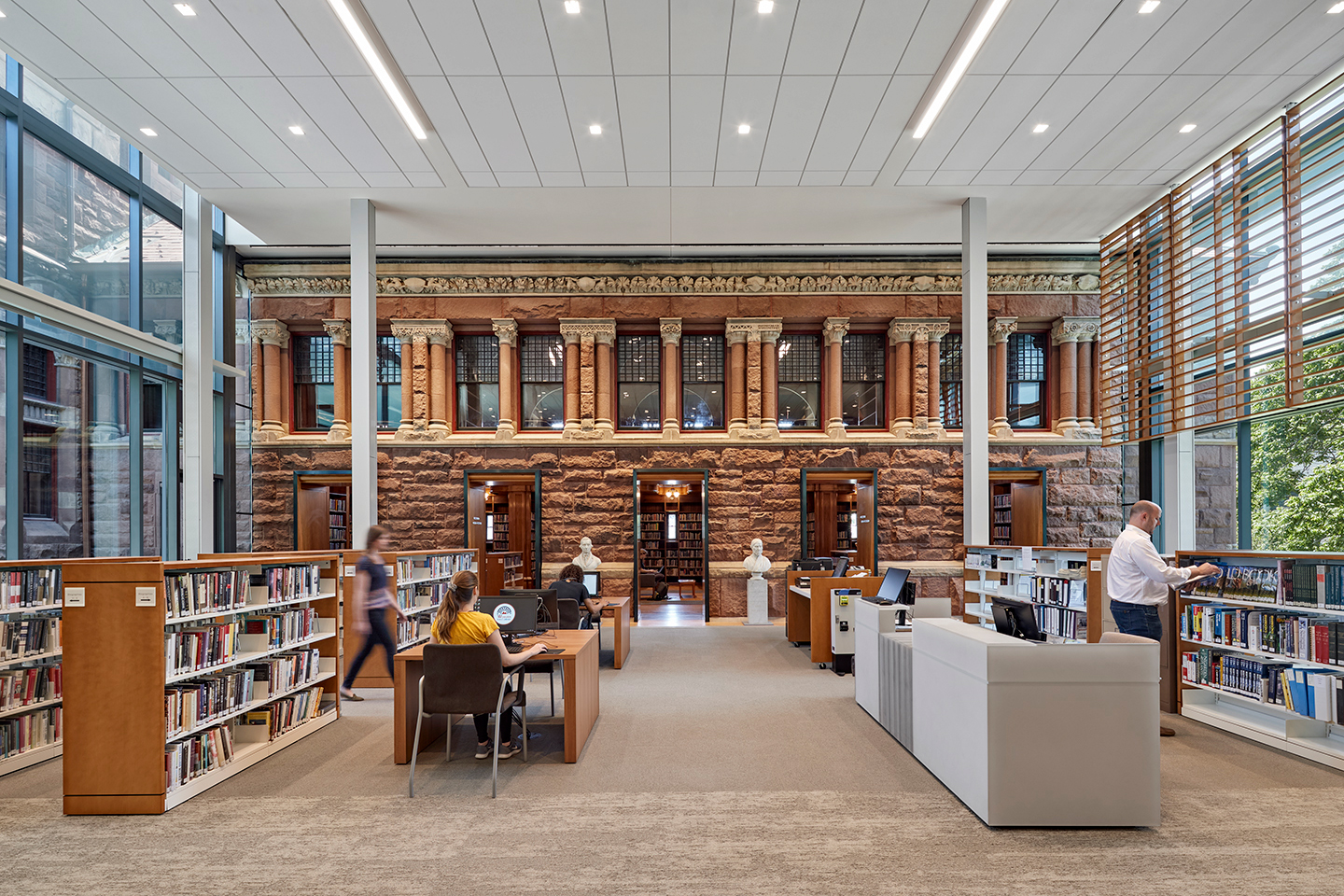Story at a glance:
- The architects at CBT share their lessons learned through years of sustainable design practice.
- Many of the communities hit hardest by the pandemic also suffer from poor air quality, extreme temperatures, and a lack of open, safe public space.
- By incorporating biomimicry into architecture we can achieve a more intuitive approach to regeneration that requires less mechanical intervention.
A majority of the conversation around sustainability in architecture has focused on mitigating environmental impact, i.e. producing less waste and doing less harm to the planet. While this is a critical pillar of environmentally conscious design, our current climate crisis calls for more aggressive action. Resource scarcity, increasingly unpredictable climate events, and the prospect of future health crises are all calls to action to rethink our approach to sustainability.
This raises an important question: How can we elevate our methods to achieve more holistic designs that not only reduce environmental impact, but actively contribute to the regeneration of the environments we occupy?
While our understanding of how we interact with and affect our surroundings continues to evolve, one concept is self-evident: Regenerative design is the path forward to ensure a more sustainable future. To create meaningful and effective change, we must shift our thinking and strategies beyond net-zero toward net-positive design―in every sense of the word, not just pertaining to energy―as an industry standard.
At CBT, we’ve taken some lessons learned through our sustainably focused practices and considered the regenerative design trends that should guide the industry in the years ahead.
Climate Justice and Equitable Outdoor Space
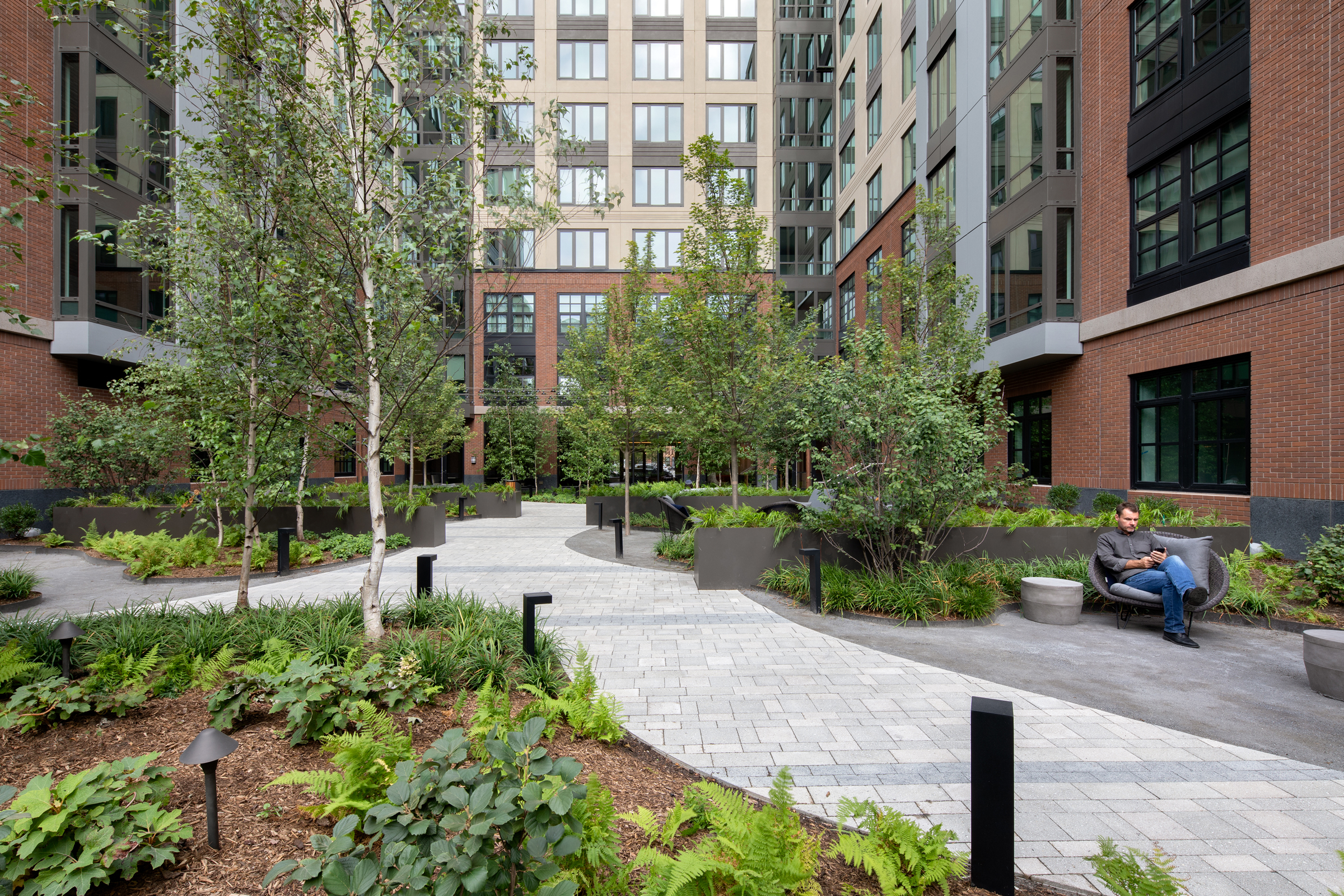
Outdoor space at The Smith, designed by CBT. Photo by Ed Wonsek
The current global health crisis has only further exposed existing issues of social inequity. Many of the communities hit hardest by the pandemic also suffer from poor air quality, extreme temperatures, and a lack of open, safe public space. This has been observed in several urban communities with high rates of asthma and other respiratory diseases partly caused by pollution. Residents in these communities experienced significantly higher rates of COVID-19 than those in surrounding areas with better air quality.
As designers, we should aim to advance the conversation around equity by leveraging better practices and focusing on underserved communities to ensure a fairer and more just environment for all. To achieve this, implementing healthy, comfortable, and user-oriented spaces is paramount.
Strengthening indoor-outdoor connections, increasing smaller, neighborhood-scaled public areas, expanding access to views and greenery, providing quality indoor air, and improving circulation will be key components of urban living moving forward, and they can work to mitigate existing environmental factors that cause adverse health outcomes.
Additionally, a stronger emphasis on health and wellness will encourage broader use of outdoor space year-round. Strategic approaches must account for not only a variety of uses, but also different environmental circumstances to allow individuals greater thermal comfort in any climate.
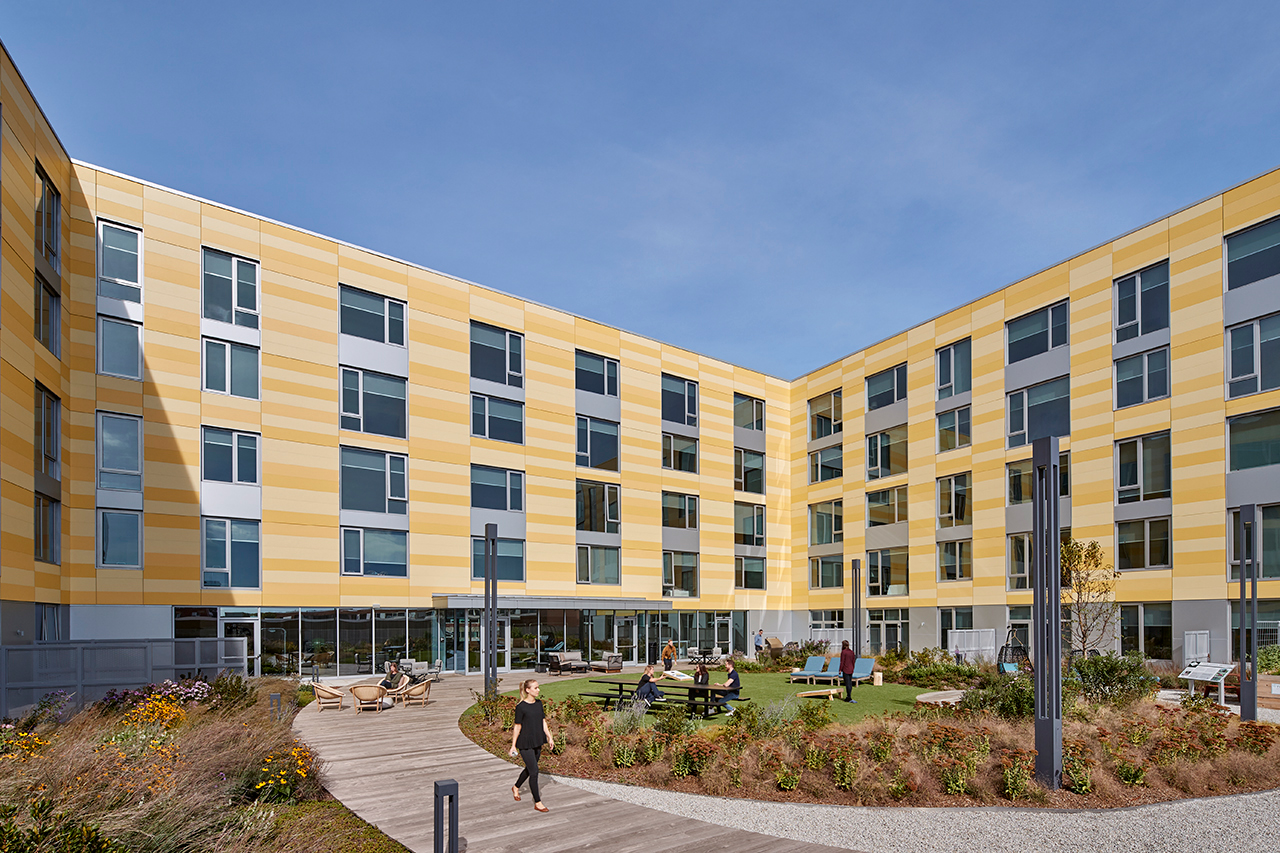
Outdoor space at The Harvey. Photo by Robert Benson
For public outdoor spaces to be truly equitable, they must be flexible in how they are programmed and accessible for all to enjoy. Through our work on the Abu Dhabi Climate Pilot Program, our team at CBT was able to extend the usability of three different urban sites through climate remediation and strategic placemaking. We found that implementing tactics such as rolling shades, night-time cooling, high-albedo materials, and the creation of microclimates significantly reduced thermal stress and alleviated harmful urban heat island effects.
Biomimicry and Natural Systems
Nature-inspired designs and the practice of implementing systems analogous to those found in the natural world can also promote sustainability and efficiency through well-conceived materials and processes. By incorporating these methods—known as biomimicry—into architecture, we can achieve a more intuitive approach to regeneration that requires less mechanical intervention.
With this in mind, ensuring a healthy carbon balance in new buildings will also require thinking beyond more traditional methods and materials. One promising new approach is the growing push toward sequestering carbon. The use of carbon-sequestering concrete, for example, mimics the natural carbon cycle promoted in coral reefs. By adding carbon dioxide directly into cement, calcium carbonate is produced. This, in turn, neutralizes carbon emissions through chemical reactions—without a significant impact on the strength or makeup of the concrete. In taking cues from nature, which inherently lends itself to regeneration, this new concrete material transforms a CO2-emitting process into a system which instead absorbs CO2.
Although some of our biggest concerns in the last decade have focused on energy use and carbon emissions, water is also a fairly limited resource―similar to fossil fuels. Sustainable projects should not only reduce the use of water, but also clean the water collected on site for safe reuse. Cleaning and reusing wastewater and stormwater not only eases our reliance on fresh water, but also reduces potential contamination caused when nutrient-rich stormwater or wastewater is dumped into lakes, bays, and other bodies of water.
The Building Envelope
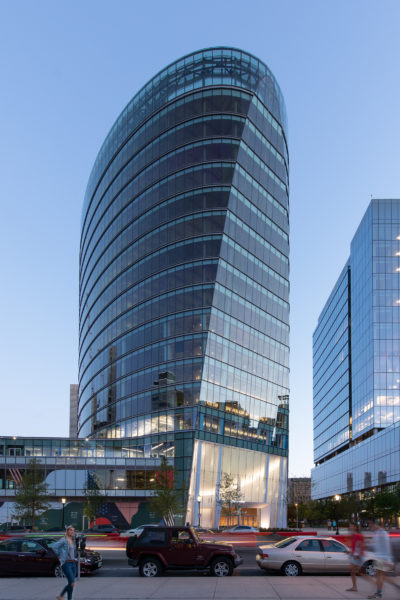
121 Seaport, designed by CBT. Photo by Chuck Choi
Efficient building envelopes are a cornerstone of regenerative design, protecting the indoor environment, easing climate-control efforts, and reducing overall energy needs. Serving as a physical boundary between the conditioned and unconditioned environments, envelopes keep certain damaging outside elements (such as humidity, heat, and pollutants) from entering a space.
More efficient building envelopes improve air quality, support more passive heating and cooling, and reduce the wear and tear on existing mechanical systems. And while a high percentage of outdoor air is not a new development in designing for wellness, the focus must be on creating an airtight envelope to control the filtration of outside air.
With regard to robust, high-performing building envelopes, we have been successful on two current Boston-area multi-family projects, which achieve up to 20% better thermal performance than is required by code. Key to their performance are the minimizing of infiltration and exfiltration rates by focusing on transitions and penetration details of the envelope, e.g. transitions between windows and the opaque wall.
As we improve our building strategies and bolster the thermal performance of our envelopes, we must also consider the impact on their emotional performance—the part of the envelope that allows building occupants to negotiate daylight, views, and sensory connections to their environment. This is incredibly important for the health of the internal user, and when it’s executed with building performance in mind, can offer results that exceed both wellness and sustainability goals.
While minimizing windows may allow for a higher energy performance by virtue of increasing the opaque portion of the envelope, failure to consider outdoor connections and daylighting may negatively impact the envelope’s emotional performance. Striking balance in window-to-wall ratios, therefore, becomes crucial to achieving user satisfaction within the space.

The Harvey. Photo by Robert Benson
The envelope is also the largest public-facing component of a building and may provide a great opportunity to collect the sun’s energy for purposes of regeneration. Facade-integrated photovoltaics, or solar panels incorporated directly into the envelope, have been around for some time. However, there is still work to be done across the architectural, scientific, and manufacturing industries to make this technology prevalent and highly effective.
Maintaining Innovation
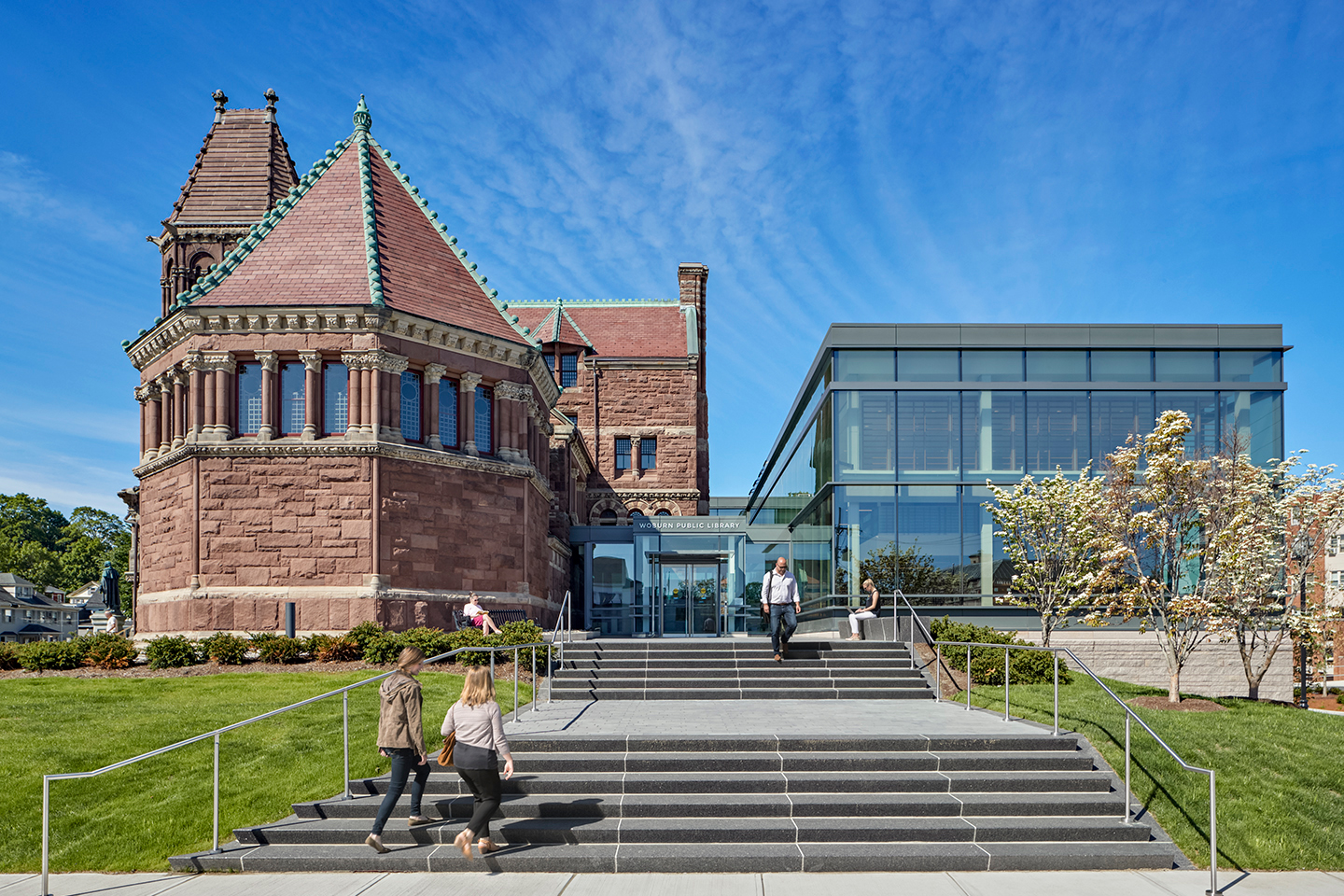
Woburn Public Library. Photo by Robert Benson
Beyond helping our clients to meet crucial sustainability goals, regenerative strategies will also provide new financial opportunities for the building owner. As land becomes scarcer and more expensive, there will be a significantly greater environmental and economic benefit to reviving and adapting existing buildings so that they can retain their value and function more efficiently into the future.
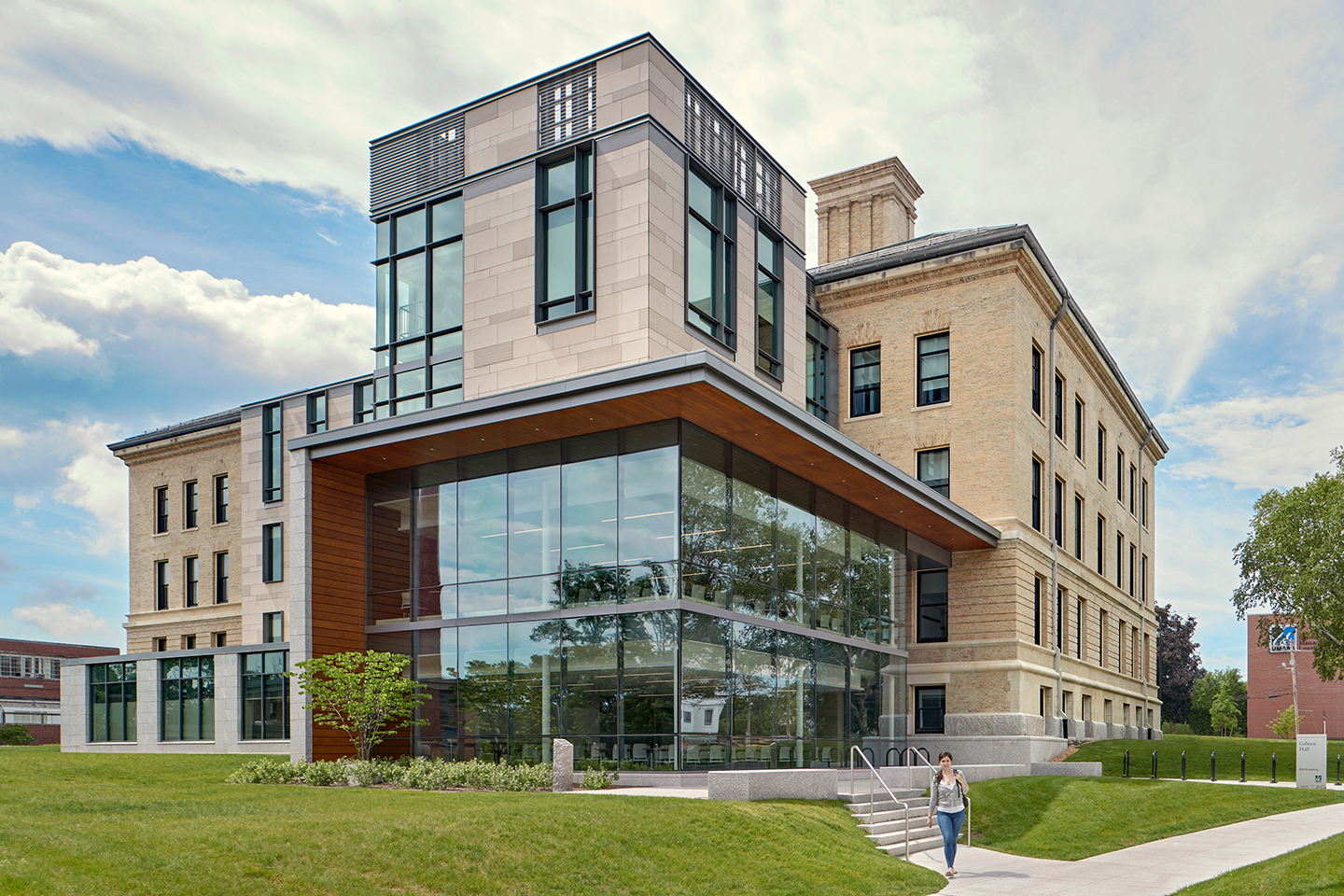
Coburn Hall at the University of Massachusetts Lowell, designed by CBT. Photo by Robert Benson
Creating more versatile, useful, and future-ready buildings that give back to the environment over time might seem to be an overwhelming undertaking at first. However, the use of low-carbon or carbon-sequestering materials and thinking strategically about the building envelope will be vital approaches for the longer term.
In order for the industry to maintain its innovative edge, we must find creative ways to combat the ever-worsening climate crisis. By proactively changing and redefining the status quo around sustainability, we can play a critical role in creating healthier buildings that serve as models for the future of innovative, regenerative design

